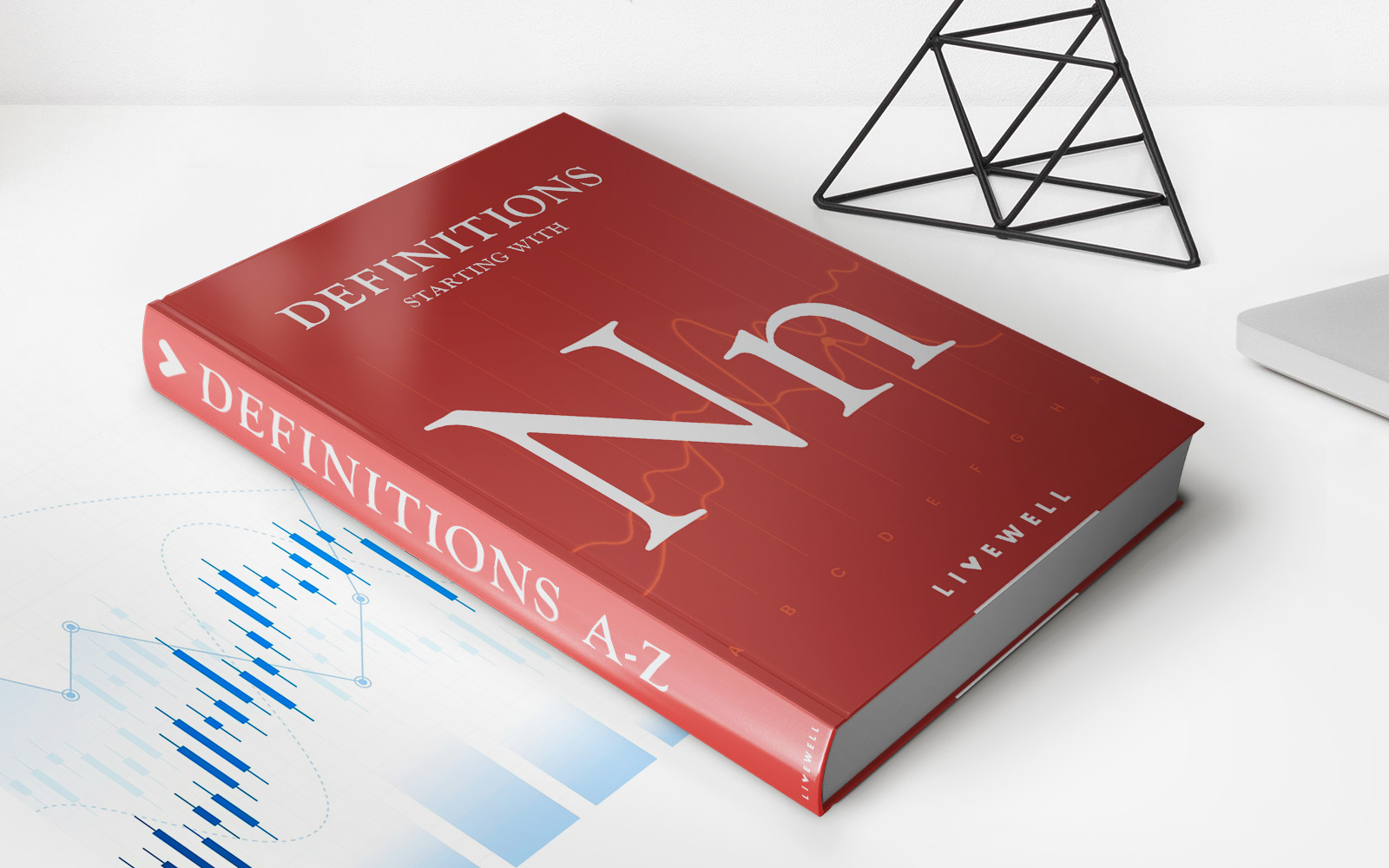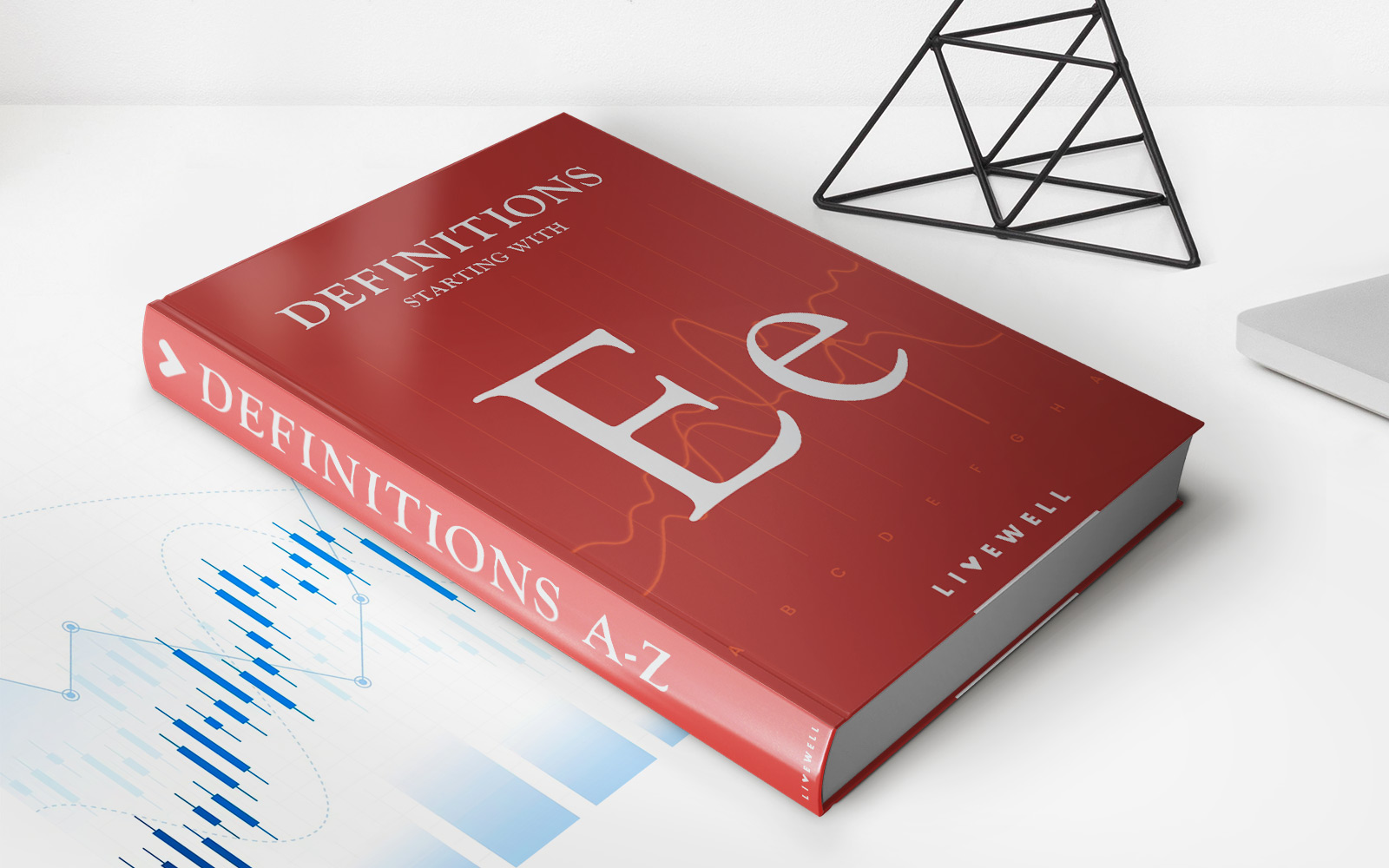

Finance
What Does PPO Mean In Dental Insurance?
Modified: February 21, 2024
Learn what PPO means in dental insurance and how it can impact your finances. Find out the benefits and drawbacks of this coverage option.
(Many of the links in this article redirect to a specific reviewed product. Your purchase of these products through affiliate links helps to generate commission for LiveWell, at no extra cost. Learn more)
Table of Contents
Introduction
Welcome to the world of dental insurance, where understanding the various terms and acronyms can feel like navigating a complex maze. One such term that you may come across is PPO, which stands for Preferred Provider Organization. If you’re wondering what PPO means in dental insurance and how it can benefit you, you’ve come to the right place.
Dental insurance plans are designed to help individuals and families cover the costs of dental care, including preventive treatments, restorative procedures, and even orthodontic services. Having dental insurance can provide financial protection and peace of mind, ensuring that you can maintain optimal oral health without breaking the bank.
PPO dental insurance is one of the most popular types of dental plans available. It offers a range of benefits and advantages compared to other types of dental insurance, such as health maintenance organizations (HMOs) or dental discount plans. Understanding the key features and how PPO dental insurance works can help you make an informed decision when selecting a dental plan.
In this article, we will delve into what PPO dental insurance means, its benefits, network coverage, costs, limitations, and how it compares to other dental plans. By the end, you should have a clear understanding of PPO dental insurance and whether it is the right choice for you and your dental needs.
Understanding Dental Insurance
Before diving into the specifics of PPO dental insurance, it is essential to have a basic understanding of how dental insurance works in general. Dental insurance is a type of health insurance that focuses on covering the costs associated with dental care and treatments.
Typically, dental insurance plans operate on a system of regular premiums, whereby individuals or employers pay a set amount each month in exchange for coverage. When you require dental care or treatment, you submit a claim to your insurance provider, who reimburses you for a portion of the expenses incurred, depending on the terms and coverage of your plan.
Dental insurance plans often categorize treatments into different levels or classes based on their complexity and necessity. Common classifications include preventive services (such as regular cleanings and exams), basic restorative services (such as fillings), major restorative services (such as crowns or bridges), and orthodontic services.
It’s important to note that dental insurance plans typically have coverage limits, waiting periods for certain procedures, and may have specific exclusions or limitations on certain treatments. Understanding these aspects of your dental insurance coverage is crucial to ensure you are aware of what is and isn’t covered.
Now that we have a general understanding of dental insurance, let’s take a closer look at what PPO dental insurance entails and how it differs from other types of dental plans.
What is PPO Dental Insurance?
PPO dental insurance, as mentioned earlier, stands for Preferred Provider Organization dental insurance. It is a type of dental plan that offers a network of preferred dental providers to choose from. These providers have agreed to provide services at discounted rates to members of the PPO network.
With PPO dental insurance, individuals have the flexibility to visit any dentist of their choice. However, the benefits and coverage are typically higher when receiving treatment from a dentist within the network. When you visit an in-network dentist, you can take advantage of negotiated rates, meaning you pay less out-of-pocket for covered services.
One of the key advantages of PPO dental insurance is that it allows you to see a specialist without needing a referral from your primary dentist. This can be beneficial if you require specialized treatment, such as orthodontics or oral surgery.
It’s essential to note that even if you choose to visit an out-of-network dentist with PPO dental insurance, you can still receive some level of coverage. However, the coverage for out-of-network dentists is typically lower, and you may be responsible for a higher percentage of the costs.
Overall, PPO dental insurance offers a good balance between flexibility and cost savings. While you have the freedom to choose any dentist, you can maximize your benefits and save money by selecting an in-network provider.
Now that we have a clear understanding of what PPO dental insurance is, let’s explore the benefits it provides and why it may be a preferred choice for many individuals and families.
Benefits of PPO Dental Insurance
PPO dental insurance offers several key benefits that make it an attractive choice for individuals and families looking for dental coverage. Let’s explore some of the advantages:
- Accessibility: PPO dental insurance provides a wide network of dental providers, making it easier for individuals to find a dentist near them. This ensures convenient access to dental care, whether for routine check-ups or more extensive treatments.
- Flexibility: One of the primary benefits of PPO dental insurance is its flexibility. Unlike other types of dental plans that may restrict your choice of dentists, PPO plans allow you to visit any dentist you prefer. This can be especially beneficial if you have a long-standing relationship or specific preferences when it comes to your dental care provider.
- Cost Savings: PPO dental insurance offers discounted rates for dental services through its network of preferred providers. This means that when you visit an in-network dentist, you can benefit from lower negotiated fees, resulting in significant cost savings. Additionally, PPO plans typically cover a higher percentage of the costs for in-network providers, further reducing your out-of-pocket expenses.
- No Referrals: Unlike some other dental plans, PPO dental insurance does not require a referral from your primary dentist to see a specialist. This allows you to seek specialized care directly from the appropriate dental professional, saving you time and eliminating unnecessary steps.
- Comprehensive Coverage: PPO dental insurance typically offers coverage for a wide range of dental services, including preventive care, basic restorative treatments, major restorative procedures, and sometimes orthodontic services. This comprehensive coverage ensures that you have financial protection for various dental needs.
Overall, the benefits of PPO dental insurance, such as accessibility, flexibility, cost savings, and comprehensive coverage, make it a popular choice for many individuals and families seeking dental insurance coverage. However, it’s important to consider other factors, such as the network of providers in your area and the specific coverage details, when deciding on the right dental insurance plan for your needs.
Now that we’ve explored the benefits, let’s delve into the network coverage aspect of PPO dental insurance and how it can impact your dental care choices.
Network Coverage in PPO Dental Insurance
One of the key elements of PPO dental insurance is its network coverage. PPO plans have a network of preferred dental providers who have agreed to offer services at discounted rates to plan members. Understanding network coverage is crucial to maximize the benefits of your PPO dental insurance plan.
When you enroll in a PPO dental insurance plan, you have the option to choose dentists within the network or go to an out-of-network dentist. However, there are distinct differences in coverage and costs between in-network and out-of-network providers.
Visiting an in-network dentist provides several advantages, including:
- Cost Savings: In-network dentists have agreed to offer services at discounted rates negotiated with the insurance company. This means you will typically pay lower out-of-pocket expenses for covered services compared to visiting an out-of-network dentist.
- Higher Coverage Percentage: PPO dental plans often have a higher coverage percentage for in-network providers. This means the insurance company will reimburse a greater percentage of the treatment costs, reducing your financial responsibility.
- No Balance Billing: In-network dentists are not allowed to “balance bill” patients. Balance billing occurs when a dentist charges you the difference between their usual fee and the discounted rate set by the insurance company. With in-network providers, you only need to pay your designated copayment or coinsurance amount.
On the other hand, visiting an out-of-network dentist may still provide some coverage, but with a few important considerations:
- Reduced Coverage: Out-of-network dentists do not have pre-negotiated rates with the insurance company, which often results in higher out-of-pocket costs for you. The insurance company will typically cover a lower percentage of the treatment costs, and you may be responsible for paying the difference.
- Balance Billing: Out-of-network dentists have the freedom to charge their usual fees, which may exceed the insurance company’s allowed amount. This means you may receive a bill for the difference, in addition to your copayment or coinsurance.
- Claims Process: When you visit an out-of-network dentist, you will likely need to submit the dental claim directly to the insurance company, as the dentist may not have a direct billing arrangement. This process can involve more paperwork and potentially longer reimbursement times.
Understanding the network coverage in your PPO dental insurance plan is crucial to make informed decisions about your dental care. It’s important to review the list of in-network dentists provided by your insurance company and confirm their participation before seeking treatment.
Now that we’ve explored network coverage, let’s dive into the cost aspect of PPO dental insurance and how it can impact your budget.
Cost of PPO Dental Insurance
When considering dental insurance options, understanding the cost associated with a PPO dental insurance plan is crucial. The cost of PPO dental insurance can depend on several factors, including your location, the level of coverage you choose, and whether you opt for an individual or family plan.
Here are some key considerations regarding the cost of PPO dental insurance:
- Premiums: PPO dental insurance plans typically require you to pay a monthly or annual premium. The premium amount can vary based on the level of coverage and the insurance company’s pricing structure. It’s important to consider these premium costs when budgeting for dental insurance.
- Deductibles: PPO plans often have an annual deductible, which is the amount you must pay out of pocket before your insurance coverage kicks in. Deductibles can vary, and higher deductible plans often have lower monthly premiums, while lower deductible plans may have higher premiums.
- Copayments and Coinsurance: PPO dental insurance plans typically involve cost-sharing in the form of copayments or coinsurance. Copayments are fixed amounts that you pay for specific services, such as a certain amount for a routine dental cleaning. Coinsurance refers to the percentage of the treatment costs that you are responsible for, after the deductible is met.
- Out-of-Pocket Maximums: PPO plans often have an out-of-pocket maximum, which is the maximum amount you would need to pay in copayments, coinsurance, and deductibles in a given year. Once you reach the out-of-pocket maximum, the insurance company covers 100% of covered services for the remainder of the year.
- Provider Rates: PPO dental insurance plans have negotiated rates with in-network dentists, which can result in cost savings for covered services. These negotiated rates are typically lower than the dentist’s usual fees. When you visit an in-network provider, you can expect to pay less out of pocket compared to an out-of-network provider.
It’s important to carefully review the costs associated with a PPO dental insurance plan and consider your budget and dental care needs. Comparing different plan options and understanding the coverage details, including premiums, deductibles, copayments, and coinsurance, can help you make an informed decision.
Additionally, it’s worth considering the value and potential savings that PPO dental insurance can provide. The discounted rates offered by in-network dentists, combined with the comprehensive coverage, can help you minimize dental expenses in the long run.
Now that we’ve explored the cost aspect of PPO dental insurance, let’s move on to understanding the limitations of this type of coverage.
Limitations of PPO Dental Insurance
While PPO dental insurance offers numerous benefits and flexibility, it’s important to be aware of its limitations. Understanding these limitations can help you manage your expectations and make informed decisions about your dental care. Here are some limitations to consider:
- Network Restrictions: Although PPO plans give you the flexibility to visit any dentist, you may experience limitations if you prefer an out-of-network provider. Out-of-network dentists may not have pre-negotiated rates, resulting in higher out-of-pocket costs for you.
- Waiting Periods: PPO dental insurance plans often have waiting periods for certain procedures, particularly more extensive treatments like crowns, bridges, or orthodontics. During the waiting period, your coverage may be limited or even excluded for those specific treatments.
- Annual Maximums: PPO dental insurance plans typically have an annual maximum, which is the maximum dollar amount the insurance company will pay for covered services in a year. If your dental expenses exceed the annual maximum, you’ll be responsible for the additional costs out of pocket.
- Exclusions and Limitations: PPO dental insurance plans may have exclusions or limitations on specific treatments or procedures. This could include certain cosmetic procedures or specialized dental services that may not be covered under the plan. It’s important to review the coverage details and any limitations before enrolling in a PPO dental insurance plan.
- Preauthorization Requirements: Some PPO dental plans may require preauthorization for certain procedures, especially those that are more complex or costly. Preauthorization involves getting approval from the insurance company before receiving the treatment to ensure it is deemed necessary and covered by the plan.
Understanding these limitations is crucial to avoid any surprises or misunderstandings when it comes to your dental coverage. It’s essential to carefully review the plan documents, including the coverage details, exclusions, waiting periods, and any preauthorization requirements.
While PPO dental insurance provides a great balance of flexibility and cost savings, it’s important to evaluate your specific dental needs and preferences to determine if this type of coverage aligns with your priorities and budget.
Now that we’ve explored the limitations of PPO dental insurance, let’s compare it to other types of dental plans to understand the differences and help you make an informed decision.
PPO Dental Insurance vs. Other Dental Plans
When choosing dental insurance, it’s important to compare different types of plans to find the one that best suits your needs. PPO dental insurance is just one option among several types of dental plans. Let’s explore how PPO dental insurance compares to other common types of dental plans:
- HMO Dental Plans: Health Maintenance Organization (HMO) dental plans typically have a more restricted network of dentists compared to PPO plans. With HMO plans, you are required to select a primary dentist who will coordinate your dental care and refer you to specialists when necessary. While HMO plans often have lower premiums, they may have more limitations in terms of provider choice and flexibility compared to PPO plans.
- Dental Discount Plans: Dental discount plans are not insurance plans but rather discount programs that offer reduced rates on dental services. With discount plans, you pay an annual fee to access discounted rates from participating dentists. While discount plans can provide cost savings, they may not offer the same comprehensive coverage and reimbursement benefits as PPO dental insurance.
- Indemnity Dental Insurance: Indemnity dental insurance, also known as traditional dental insurance, allows you to visit any dentist of your choice. However, unlike PPO plans, indemnity plans may not have a network of preferred providers or negotiated rates. With indemnity plans, you typically pay upfront for services and are later reimbursed by the insurance company based on a predetermined fee schedule.
Compared to other dental plans, PPO dental insurance offers a good balance between provider choice, flexibility, and cost savings. It provides the freedom to choose any dentist, access to a network of preferred providers for higher coverage and discounted rates, and comprehensive coverage for a wide range of dental services.
Ultimately, the right dental insurance plan for you will depend on your specific dental care needs, budget, and personal preferences. Consider factors such as the network of providers, coverage options, cost-sharing arrangements, and limitations of each type of plan when making your decision.
Now that we’ve compared PPO dental insurance with other dental plans, let’s conclude our exploration of PPO dental insurance and its benefits.
Conclusion
In conclusion, PPO dental insurance is a popular choice for individuals and families looking for dental coverage. It offers a range of benefits, including accessibility, flexibility, cost savings, and comprehensive coverage. With PPO dental insurance, you have the freedom to choose any dentist, although visiting in-network providers can result in greater cost savings and higher coverage percentages.
While there are limitations to PPO dental insurance, such as network restrictions and waiting periods, understanding these limitations can help you navigate your dental care decisions effectively. Additionally, it’s important to review the costs associated with a PPO dental insurance plan, including premiums, deductibles, copayments, and coinsurance, to ensure it aligns with your budget.
When comparing PPO dental insurance to other types of dental plans, consider factors such as network coverage, provider choice, and the level of coverage and cost-sharing offered. Each type of plan has its own advantages and limitations, so it’s essential to evaluate your specific dental care needs and preferences when making a decision.
Ultimately, the right dental insurance plan for you is one that meets your dental needs, fits within your budget, and provides the level of flexibility and coverage you desire. By understanding PPO dental insurance and its benefits, limitations, and how it compares to other plans, you can make an informed decision about your dental coverage and ensure you have the necessary financial protection for your oral health.
We hope this article has provided you with clarity and insights into what PPO dental insurance means and how it can benefit you. Remember to review the specific details and terms of any dental insurance plan before making your final decision. Here’s to a healthier smile and peace of mind with your dental insurance!














